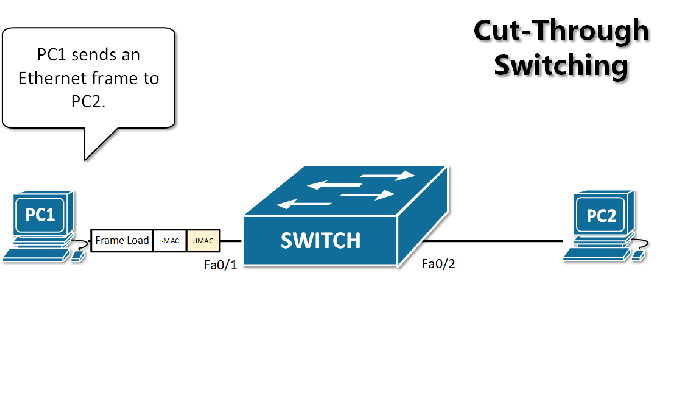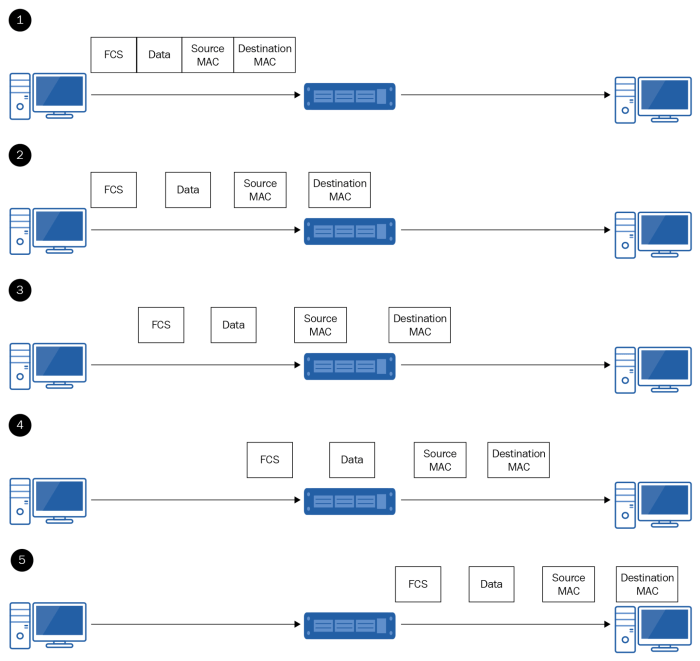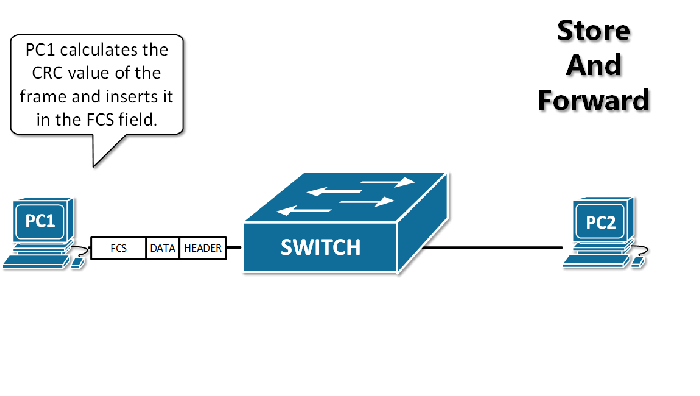Which switching method drops frames that fail the FCS check? This question delves into the intricacies of networking, exploring the mechanisms that ensure data integrity and the consequences of frame loss. Join us as we unravel the complexities of switching methods, FCS, and their impact on network performance.
Switching methods play a crucial role in managing network traffic, determining how frames are processed and forwarded. Among the various methods, some drop frames that fail the Frame Check Sequence (FCS) check, while others may forward them despite errors. Understanding these differences is essential for optimizing network performance and minimizing data loss.
Switching Method Overview

Switching methods play a crucial role in networking, enabling data to be efficiently forwarded between devices. There are several types of switching methods, each with its own advantages and disadvantages.
Store-and-Forward, Which switching method drops frames that fail the fcs check
In store-and-forward switching, the entire frame is received and stored in a buffer before being forwarded. This allows for error checking and correction, ensuring that only valid frames are forwarded. However, it also introduces latency as the frame must be completely received before it can be forwarded.
Cut-Through
In cut-through switching, the frame is forwarded as soon as the destination address is read. This significantly reduces latency as the frame does not need to be fully received before forwarding. However, it also increases the risk of forwarding corrupted frames as there is no error checking.
Fragment-Free
Fragment-free switching is a hybrid approach that combines the benefits of both store-and-forward and cut-through switching. Frames are forwarded as soon as the first fragment is received, but only if the entire frame is received within a certain time frame.
This reduces latency while also mitigating the risk of forwarding corrupted frames.
Frame Check Sequence (FCS)

The Frame Check Sequence (FCS) is a 32-bit field added to the end of Ethernet frames. It is used to detect errors in the transmitted frame by performing a cyclic redundancy check (CRC). The FCS is calculated based on the contents of the frame and is compared to the FCS value calculated by the receiver.
If the two values do not match, the frame is considered corrupted and is dropped.
Frame Dropping in Switching: Which Switching Method Drops Frames That Fail The Fcs Check

Frames may be dropped during switching for various reasons, including:
- FCS failure:Frames that fail the FCS check are dropped to prevent the propagation of corrupted data.
- Buffer overflow:When the switch’s buffer is full, incoming frames may be dropped to avoid congestion.
- Congestion:If the switch is overloaded, frames may be dropped to maintain network stability.
Impact of Frame Dropping

Frame dropping can have a significant impact on network performance:
- Latency:Dropped frames can increase latency as they need to be retransmitted, which takes additional time.
- Throughput:Frame dropping can reduce throughput as fewer frames are successfully delivered.
- Reliability:Frame dropping can affect reliability as it increases the likelihood of data loss.
Mitigation Strategies
There are several strategies to mitigate the impact of frame dropping:
- Error correction:Using forward error correction (FEC) techniques can help to recover corrupted frames without the need for retransmission.
- Flow control:Implementing flow control mechanisms can help to prevent buffer overflow and frame dropping by regulating the flow of traffic.
- Load balancing:Distributing traffic across multiple switches can help to reduce congestion and frame dropping.
Comparison of Switching Methods
The following table compares the behavior of different switching methods when handling frames that fail the FCS check:
| Switching Method | FCS Failure |
|---|---|
| Store-and-Forward | Drops frame |
| Cut-Through | Forwards frame |
| Fragment-Free | Drops frame |
Detailed FAQs
What is the purpose of the FCS check?
The FCS check is used to detect errors in transmitted Ethernet frames. It is a 32-bit cyclic redundancy check (CRC) that is calculated based on the contents of the frame.
Why are frames that fail the FCS check dropped?
Frames that fail the FCS check are dropped because they are likely to contain errors. Forwarding these frames could lead to data corruption or network instability.
Which switching methods drop frames that fail the FCS check?
Store-and-forward switching is the only switching method that drops frames that fail the FCS check. Cut-through and fragment-free switching forward frames regardless of the FCS check result.